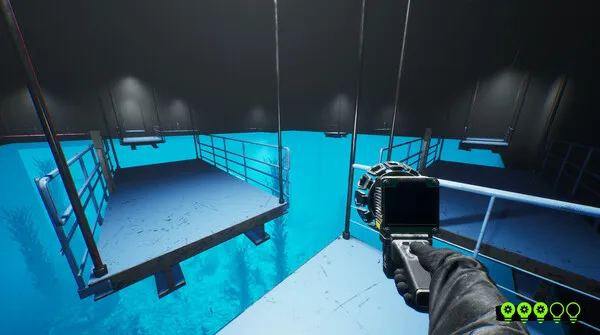Zoonomaly is a horror-survival experience unlike any other. Players find themselves trapped inside a facility or zoo plagued by distorted creatures and reality-bending anomalies. Unlike traditional horror titles where patterns can be memorized, Zoonomaly thrives on unpredictability—each monster reacts differently, maps shift through anomalies, and resources are scarce. For new players, this unpredictability is overwhelming, while for veterans, the challenge lies in mastering systems hidden beneath layers of chaos.
This article provides a full-length Tips & Guides resource for Zoonomaly. Rather than general advice, it focuses on detailed survival strategies across ten key stages of gameplay. From understanding basic mechanics to mastering anomalies and adapting for long survival runs, each section builds chronologically to give players a structured path toward mastery.
How to Learn the Basics Without Being Overwhelmed
When you first launch Zoonomaly, the atmosphere itself is intimidating. Flickering lights, eerie sound design, and roaming creatures create immediate tension. The key is to not panic in your first few runs.
Start small: explore slowly, familiarize yourself with safe rooms or checkpoints, and test the AI’s reactions to sound and light. Dying early is part of the process—use each attempt to collect information rather than viewing it as failure.
Starter tips
- Move slowly to observe monster patrol patterns.
- Practice turning lights on/off to gauge detection range.
- Focus on learning maps before objectives.
How to Understand Monster AI
Zoonomaly’s AI is built for unpredictability. Monsters don’t always patrol the same path; instead, they dynamically adjust to player noise, light, and position. This makes them feel intelligent, but it also means you can’t rely on repetition.
Players must instead learn behavioral cues. Many monsters give subtle audio warnings, such as low growls or distorted breathing, before changing behavior. Watching carefully for body language—sudden head turns, twitching limbs—also helps you know when to hide.
AI interaction tips
- Avoid sprinting unless absolutely necessary.
- Use thrown objects to bait monsters into paths.
- Pay attention to sound changes—silence can mean danger.
How to Navigate Anomalies
The titular anomalies are one of the most disorienting aspects of Zoonomaly. These are environmental distortions: looping hallways, shifting doors, gravity changes, or sudden map rearrangements.
Instead of panicking, treat anomalies as puzzles. Drop items to track loops, memorize landmarks like unique posters or broken objects, and watch for patterns in shifting geometry. Most anomalies obey some form of hidden logic that can be exploited once recognized.
Common anomalies
- Looping rooms: Leave markers like unused items.
- Shifting walls: Scan for cracks indicating exits.
- Gravity changes: Anchor near heavy objects before moving.

How to Conserve and Use Resources
Resources in Zoonomaly are deliberately scarce, and mismanagement is one of the fastest ways to lose. Ammo, batteries, and medkits must be rationed.
Use weapons only as a last resort. Stealth, baiting, and diversion should always come first. Batteries should be saved for areas with anomalies that distort vision heavily, while medkits should be kept until you’ve suffered major damage rather than small scratches.
Resource priorities
- Save ammo for unavoidable confrontations.
- Use flashlight bursts instead of constant light.
- Heal only when movement or speed is impaired.
How to Use Stealth as Your Primary Tool
Stealth is the single most important survival tactic. Monsters react strongly to noise and light, making silence your greatest weapon.
Always crouch when possible, and move along walls to minimize exposure. When passing through open spaces, extinguish your flashlight and move in short bursts during audio distractions, such as environmental noises. Stealth not only conserves resources but also reduces unpredictable encounters.
Stealth checklist
- Stick to shadows and dark corners.
- Time movements with environmental sounds.
- Avoid closing doors loudly—do it gently.
How to Build Escape Routes
Survival in Zoonomaly often hinges on having an escape plan. Because monsters adapt, a hallway safe in one run may be dangerous the next. Creating multiple routes is crucial.
Map anchor points like stairwells or safe rooms. Then connect these with secondary hallways so you always have at least two exits from any location. Dropping items along the way can help you quickly identify distorted paths if anomalies shift your route.
Escape planning tips
- Memorize at least two exits for every area.
- Leave breadcrumbs to track safe paths.
- Avoid long linear corridors with no fallback.

How to Adapt During Long Survival Runs
Zoonomaly grows harder the longer you survive. Monsters escalate in aggression, and anomalies become more frequent. Long runs require pacing and stamina.
In the early game, prioritize observation and stealth. Mid-game demands balanced resource use and calculated risks. Late-game pushes you into high-risk plays—using distractions, exploiting AI flaws, or sprinting through anomalies. Switching strategies at the right moment is key.
Phased strategies
- Early game: Hide and observe.
- Mid game: Balance stealth with exploration.
- Late game: Take risks, push objectives, prepare to escape.
How to Exploit AI Weaknesses
Despite its unpredictability, Zoonomaly’s AI still has exploitable limits. Large monsters often struggle with tight corners or doorways. Smaller, faster monsters can be baited into chasing noise instead of you.
Learning these quirks helps you save resources. Instead of fighting, you can trap monsters in loops or exploit geometry to slip past. However, relying too heavily on exploits risks immersion-breaking moments, so balance them with intended strategies.
AI weaknesses
- Bait monsters with noise traps.
- Exploit tight corners to confuse larger threats.
- Use environment geometry to break line of sight.
How to Learn From Deaths and Improve
Every death in Zoonomaly is valuable data. Unlike other horror games where you repeat patterns, here each failure reveals environmental cues, anomaly patterns, or AI behaviors you missed.
After dying, review what led to the encounter: Did you ignore audio warnings? Did you waste resources too early? Was your escape route too linear? Logging these observations builds instincts over time.
Death as training
- Treat each run as practice, not failure.
- Analyze causes of detection or death.
- Adjust strategies incrementally across runs.

How to Engage With the Community for Advanced Tips
Zoonomaly’s community is active in sharing strategies, exploits, and anomaly theories. Forums, Discord servers, and streaming platforms provide a wealth of insights.
Engaging with the community not only teaches advanced tricks but also makes the learning curve less isolating. Watching expert players helps you see how they manage resources or adapt to unpredictable anomalies under pressure.
Community resources
- Forums for bug reports and strategies.
- Discord groups for live collaboration.
- Streams to observe professional-level play.
Conclusion
Zoonomaly is a game that thrives on fear of the unknown. To survive, players must turn that unknown into a system they can read, predict, and adapt to. Mastering monster AI, conserving resources, navigating anomalies, and building escape plans all combine into a survival toolkit. With patience, observation, and community learning, players can turn overwhelming dread into structured mastery.

















